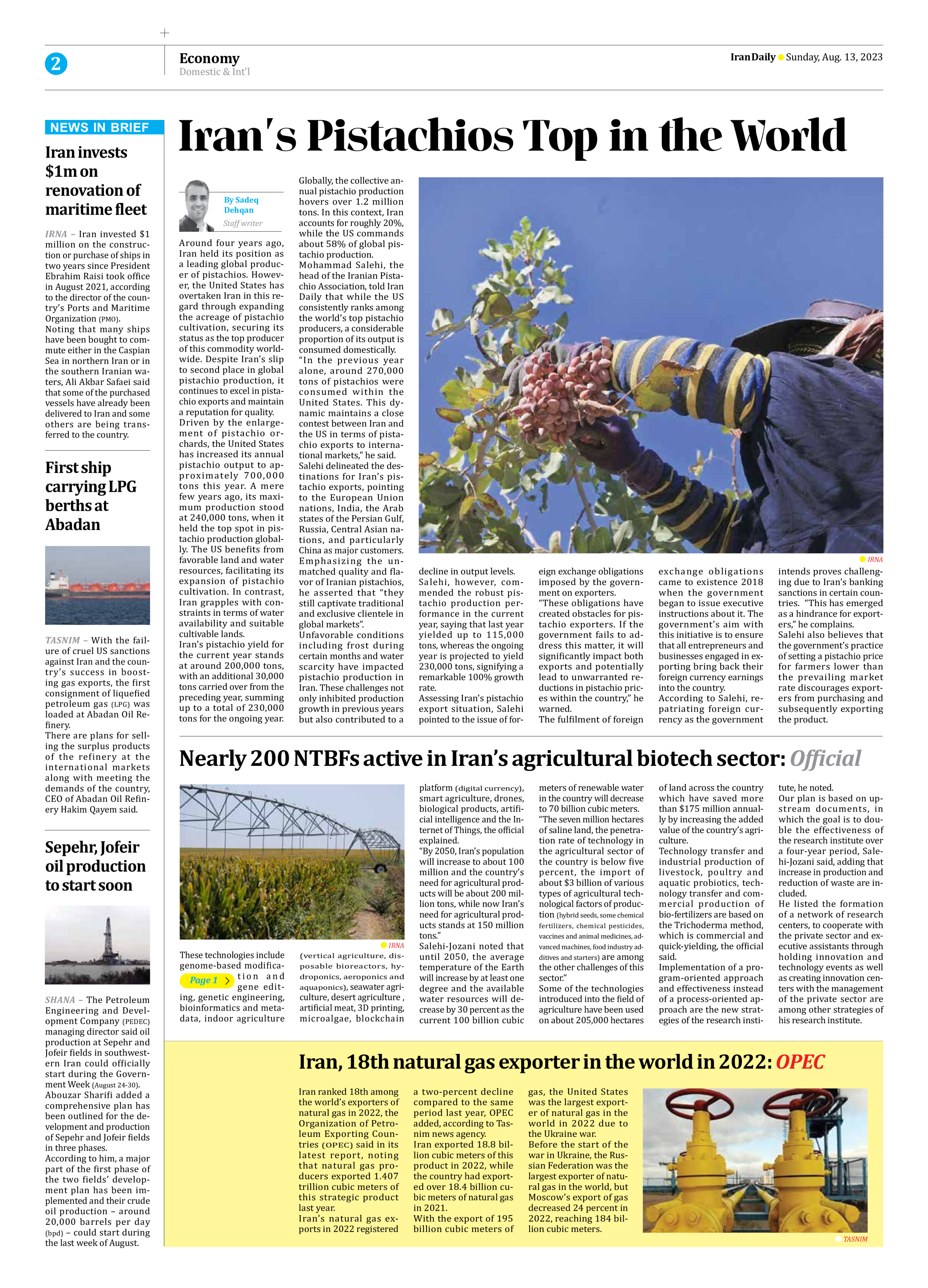
Nearly 200 NTBFs active in Iran’s agricultural biotech sector: Official
Page 1
These technologies include genome-based modification and gene editing, genetic engineering, bioinformatics and metadata, indoor agriculture (vertical agriculture, disposable bioreactors, hydroponics, aeroponics and aquaponics), seawater agriculture, desert agriculture , artificial meat, 3D printing, microalgae, blockchain platform (digital currency), smart agriculture, drones, biological products, artificial intelligence and the Internet of Things, the official explained.
“By 2050, Iran’s population will increase to about 100 million and the country’s need for agricultural products will be about 200 million tons, while now Iran’s need for agricultural products stands at 150 million tons.”
Salehi-Jozani noted that until 2050, the average temperature of the Earth will increase by at least one degree and the available water resources will decrease by 30 percent as the current 100 billion cubic meters of renewable water in the country will decrease to 70 billion cubic meters.
“The seven million hectares of saline land, the penetration rate of technology in the agricultural sector of the country is below five percent, the import of about $3 billion of various types of agricultural technological factors of production (hybrid seeds, some chemical fertilizers, chemical pesticides, vaccines and animal medicines, advanced machines, food industry additives and starters) are among the other challenges of this sector.”
Some of the technologies introduced into the field of agriculture have been used on about 205,000 hectares of land across the country which have saved more than $175 million annually by increasing the added value of the country’s agriculture.
Technology transfer and industrial production of livestock, poultry and aquatic probiotics, technology transfer and commercial production of bio-fertilizers are based on the Trichoderma method, which is commercial and quick-yielding, the official said.
Implementation of a program-oriented approach and effectiveness instead of a process-oriented approach are the new strategies of the research institute, he noted.
Our plan is based on upstream documents, in which the goal is to double the effectiveness of the research institute over a four-year period, Salehi-Jozani said, adding that increase in production and reduction of waste are included.
He listed the formation of a network of research centers, to cooperate with the private sector and executive assistants through holding innovation and technology events as well as creating innovation centers with the management of the private sector are among other strategies of his research institute.







